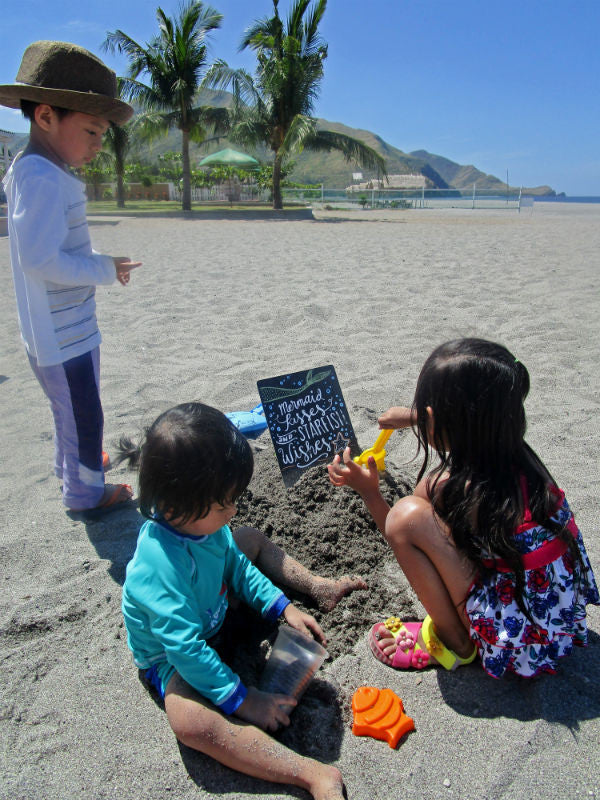
The Beach at the Edge of the World
Islands are always a sight to behold, no matter where they are in the world. With these gorgeous patches of land jutting out of the sea come the natural spas of mankind. Check out this distinctive gem locked in a little corner of the Philippines, in the northwest province of Zambales. This image alone should spark the water bug within you. Even for those who have done their rounds of commercial beach resorts, this tiny isle will be something entirely new.

Source
Force from the East by David Asuncion
So what are the perks of visiting this marine jewel?
1) It is paradise in the making
Nestled in the midst of both hideaway and exhibit-worthy coves, Capones Island is one of the most beautiful beaches in the Philippines. It is part of the township of Pundaquit. Known as ‘Isla de Capon Grande’ during the Spanish era, the cylinder-shaped isle is 2 km long and is a 30-minute boat ride from the municipality of San Antonio. Get a taste of heaven on Earth, still pristine even in these hectic modern times.

Source
Enchanting Day by David Asuncion
2) This isle has two faces
Capones is an island of contrasts. Its terrain comprises a mini forest on one side and golden grass on the other. It is home to one of the most intriguing beaches in the world. Seen from the side, it looks like a man’s face was carved on its cliffs. One half of it boasts the typical white sand (mixed with volcanic ash from nearby Mount Pinatubo) and cool blue waves, making it one of the best beaches in the tropics. The other half is made up of unusual rock and coral formations, limestone cliffs, smooth, creamy boulders, and ethereal streams and fog that make it look like it belongs on another planet! Many photographers, local and international, have captured its otherworldly mystique.

Source
Photo by Ansbert Bidol
3) It is a gateway to floating surprises
Capones Island is the biggest of the island group called "Islas de Punta Capones." From there, visitors discover other visual treats by island hopping. Nearby camera-worthy sites include Camara Island, Nagsasa Cove, Silanguin Cove, and Anawangin Cove. The last one, a favorite of locals, can be crowded during the holidays, but is only a 30-minute cruise from Capones. The less-crowded Nagsasa Cove is 45 minutes to an hour away. Trekkers may choose to hike from Pundaquit to Anawangin Cove. This route will take them about four hours.
4) Its a zap of adrenaline
The tourist information office opposite the San Antonio Market, the usual drop-off and pick-up point, assists in pairing visitors with tour and boat operators. These are just a few of the activities that await the intrepid traveler:

Source
Photo of Capones Lighthouse by Erick Dantoc
- Hiking: Atop the hill, near the western end of the island, is a heritage site from Spanish colonial times—the solar-powered Capones Lighthouse (Faro de Punta Capones). This lighthouse once guided vessels coming from the north to Subic Bay, Corregidor Island, or Manila Bay. Photography, history and architecture buffs always appreciate this brick structure from 1890, but the 360-degree panoramic view from its overlook deck will surely take anyone’s breath away.
- Camping and picnicking
- Fishing and crabbing
- Biking
- Rollerblading/skating
- Water sports: sailing, swimming, snorkeling, diving, surfing, jet skiing (the last one is available at the hotels and from operators in Pundaquit)
- Shooting the rapids: Pundaquit has its own waterfalls, which are best experienced during the rainy season.
- Rock climbing and abseiling: The craggy cliffs are great for these.
5) Visitors can play Robinson Crusoe for a day (or three)
A note to those who love their creature comforts: as the island is uninhabited, this means no electricity, washrooms, or indoor accommodation. Camping supplies are available for rent, but during peak season, these can go out of stock, so it is advisable for guests to bring their own. Some operators include these in the tour package, plus food, for an additional fee (usually P300 to 400 per person). There is a weak mobile communications signal on the island, but it’s patchy at best. Roughing it has its perks: you see wildlife in its natural habitat, reconnect with Mama Nature, test survival instincts, and awaken the inner photographer or artist in you.
6) It inspires learning and elicits participation
Tour guides explain the region’s historical and cultural significance, and its part in the country’s ecotourism industry. The Department of Environment and Natural Resources signed an agreement with the Environmental Protection of Asia Foundation in 2003 for the conversion of the island into a marine-protected area called Capones Island Marine Park.
The majestic beauty of the place will surely compel sightseers to grab their cameras and capture their surroundings for sharing later. Selfies aren’t the only means to record experiences. Artists will be inclined to whip out their liquid chalk markers and canvases to recreate experiences, or express thoughts and feelings.
Now that we’ve given a snapshot of this exceptional island, we trust that visitors will record their special moments there with Versachalk. The islanders of Capones wish all their guests: Mabuhay! (“Welcome,” in the local language.)
SIDEBAR:
What to bring:
For a smooth transition from cityscape to waterscape, these items (apart from the usual camping equipment) are handy for communing with nature:
- sunblock
- insect repellent
- can/bottle openers
- pocket knives/scissors
- flashlights
- whistles or personal safety alarms
- power bars and batteries
- masking tape and liquid chalk markers (cooler alternative to marker/labeling pens)
- rope for hanging wet clothes
- Wet Wipes, regular tissues, kitchen towels
- Ziploc bags
How to get there:
For convenience, choose a package from a tour operator in Manila, as they will arrange companion guides as well. Rates range from PHP 1,000 to 20,000 (USD 20 to 400) per person, depending on the number of people in the group. The highest rate is for those traveling solo.
For those who want to go solo, here are the works:
By land and local boat
Ride a Victory Liner bus going to Iba, the Zambales capital. Get off at San Antonio. Mention your drop-off point when you buy your tickets, so you won’t pay full fare. Travel time is around three to four hours. Take a tricycle to Pundaquit for PHP 80 (USD 1.65). Rent a boat going to Capones Island.
Boat rates vary considerably (PHP 1,000 to 1,500 [USD 20 to 30] per round trip) depending on the number of passengers and how many islands you want to visit. So if you’re not in a tour group, choose carefully. Capacities vary, too. Some small boat operators charge as low as PHP 700 (USD 14).
By air
Charter an aircraft to International Subic Airport, Castillejos Airstrip, or Iba Local Airport. Then take a bus to San Antonio.
By ferry
From the Cultural Center of the Philippines on Roxas Boulevard in Manila, take the Mount Samat Express Ferry to Subic. Or, from the Mall of Asia, take the one-hour Supercat ferry ride to Orion, Bataan. From there, it’s a one-hour bus ride to Subic. Then take another bus heading to Iba – Zambales—but get off at San Antonio.
Have you been to this island or its neighbors? Once you visit, don't forget to share your memories with Versachalk! We would love to learn about your adventures there. Post these in the comment box below.







